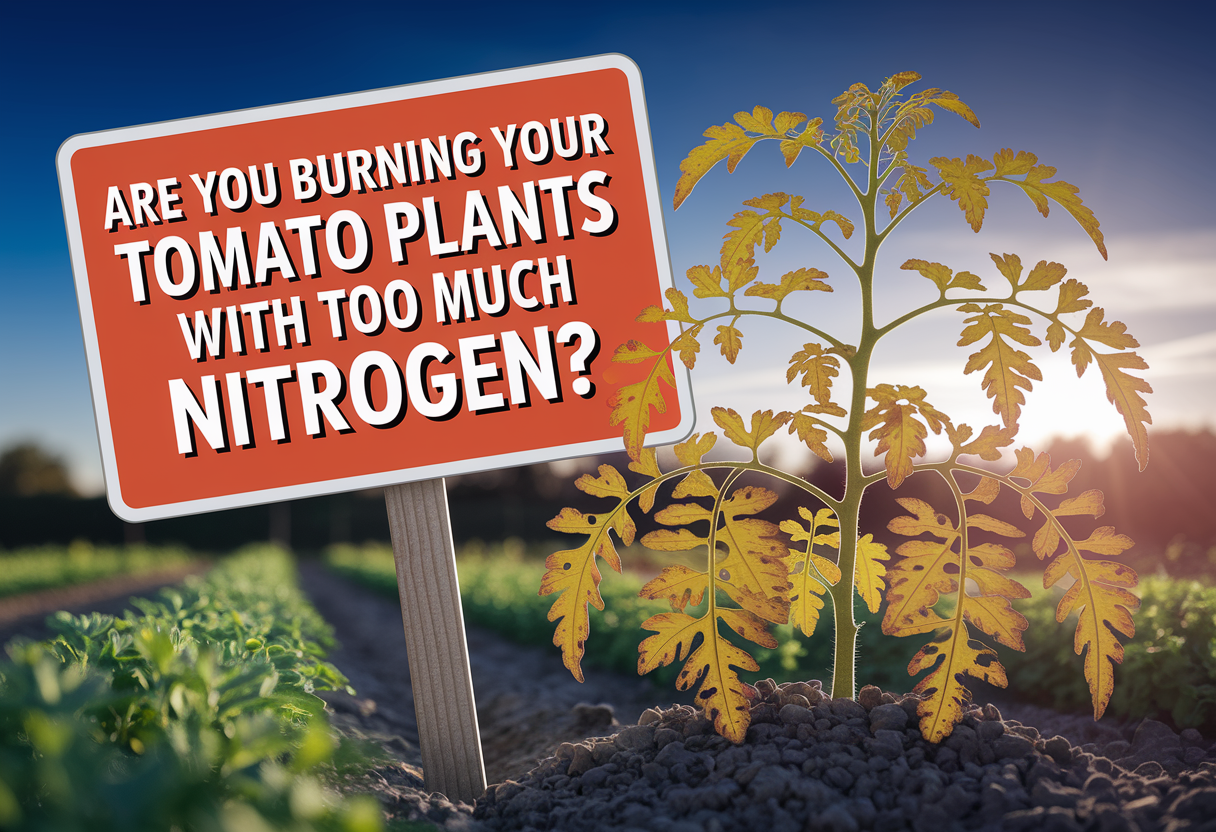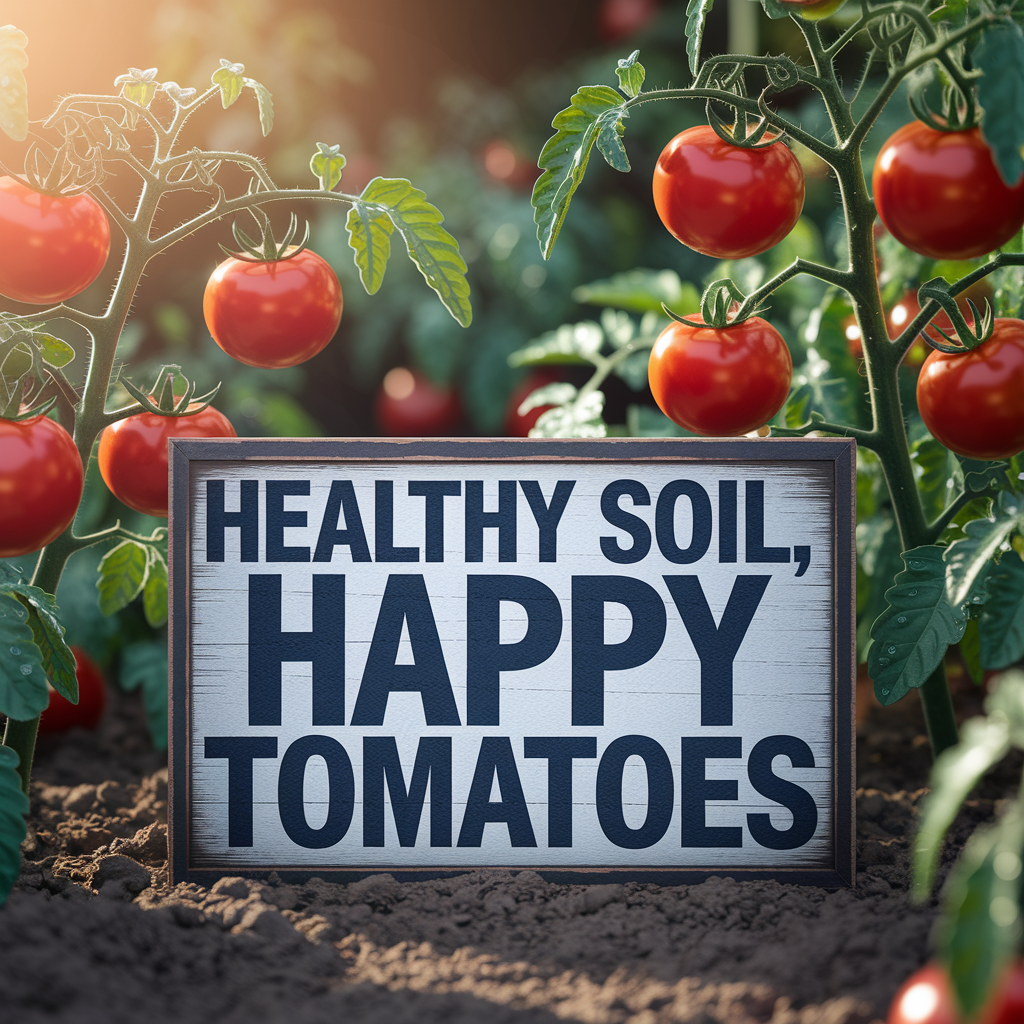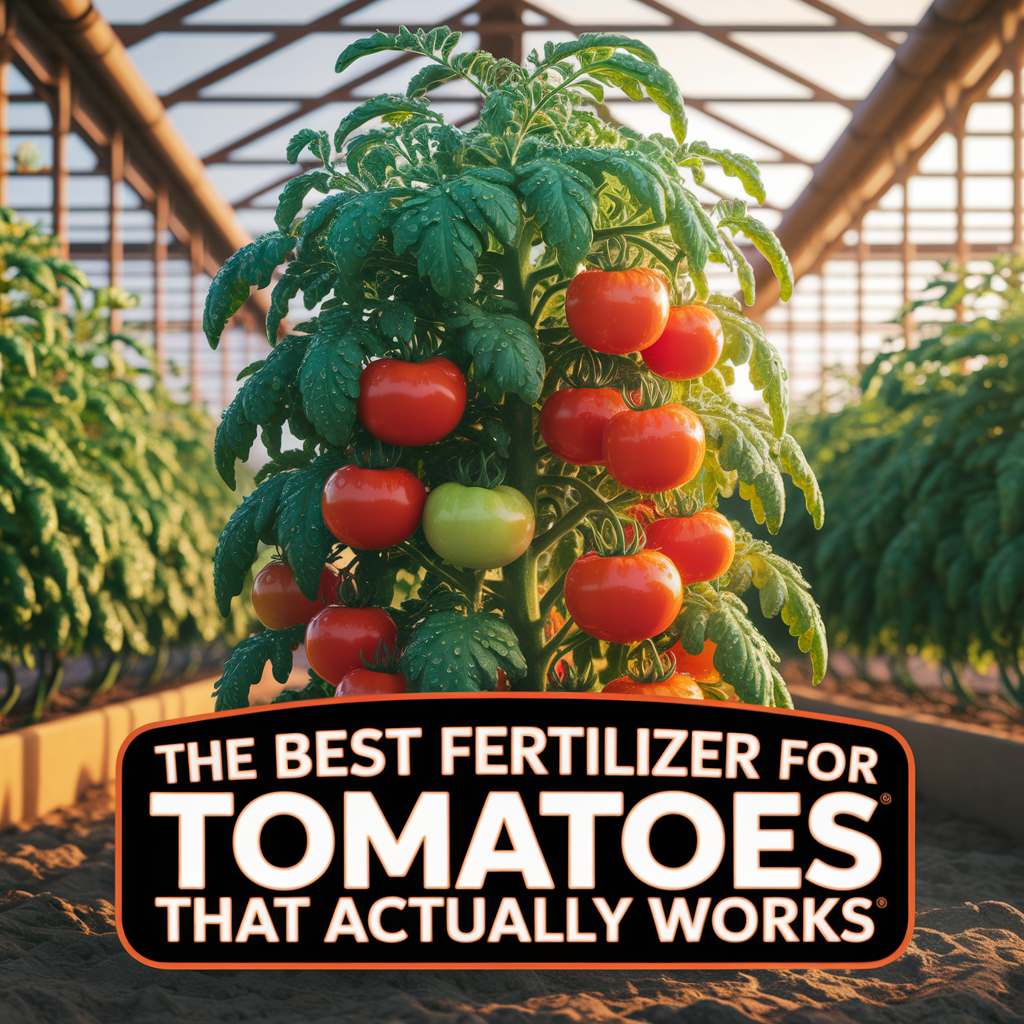
Why Finding the Best Fertilizer for Tomatoes Changed My Garden Game
I used to think growing tomatoes was all about sun and water—and while those matter, I found out fast that the real magic comes from using the right fertilizer. When I finally nailed down the best fertilizer for tomatoes (after trying way too many that didn’t work), my entire garden changed. Bigger fruit. Greener leaves. No more sad, stunted plants.
If you’ve ever asked yourself why your tomato plants are looking weak, yellow, or just not producing like they should, fertilizer is probably the missing piece. I learned that the hard way. I’d do everything right—sunlight, spacing, watering—but my plants still looked tired. Once I started using a fertilizer with the right NPK ratio, plus key extras like calcium and iron, everything turned around.
That’s exactly why I created this guide—to help you avoid all the wasted time and money I went through. I’ll walk you through everything I’ve learned about tomato plant food that actually works, when to use it, and why it’s worth finding the right one (instead of grabbing whatever’s cheapest on the shelf).
And if you’re just here for my personal recommendation? I’ve got you. This tomato fertilizer I now use regularly is the only one I’ve seen real, consistent results with—especially when it comes to boosting fruit production.
Let’s get into what makes a tomato fertilizer truly work, and why some do way more harm than good.
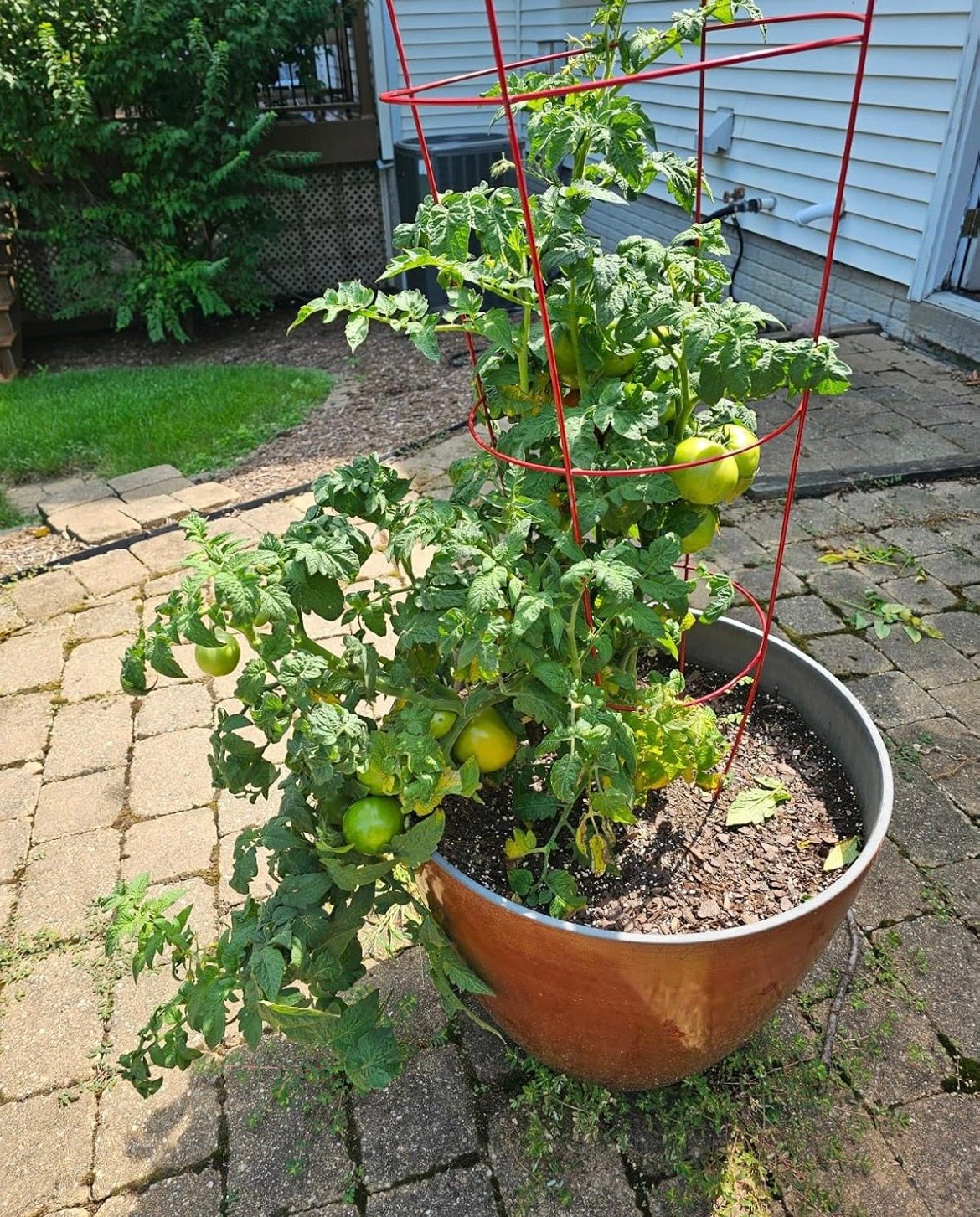
What Tomatoes Actually Need From a Fertilizer
Before I knew better, I thought any all-purpose plant food would work for tomatoes. But tomatoes aren’t basic houseplants. They’re heavy feeders that need the right mix of nutrients—not just a random fertilizer thrown into the soil.
Here’s what I’ve learned tomatoes actually need to thrive:
1. The Right NPK Ratio
NPK stands for Nitrogen (N), Phosphorus (P), and Potassium (K)—the three main nutrients every plant needs. But with tomatoes, balance is everything.
- Nitrogen helps with leafy growth. You want enough for healthy foliage, but not so much that the plant only grows leaves instead of fruit.
- Phosphorus promotes strong root development and fruit production.
- Potassium boosts overall plant health and resistance to disease.
I look for a tomato fertilizer with a ratio like 3:8:7 — that’s exactly what the one I use now has, and it’s made a noticeable difference.
2. Calcium and Iron
Tomatoes are prone to issues like blossom end rot, which is often caused by a lack of calcium. Iron helps prevent yellowing leaves and supports healthy green growth. If your fertilizer doesn’t include those, you’ll need to supplement—or deal with frustrating plant problems later.
3. Humic Acid (Yes, It Helps)
I wasn’t sold on this at first, but I’ve seen real benefits from fertilizers fortified with humic acid. It helps with nutrient absorption, especially in less-than-perfect soil. After switching to one that included it, my plants got stronger, faster.
Once I started using a fertilizer that checked all these boxes, I didn’t look back. Up next, I’ll break down how to actually read fertilizer labels (without needing a degree in chemistry) so you don’t waste time or money on the wrong stuff.

How to Read a Tomato Fertilizer Label Without Getting Confused
The first time I stood in front of the fertilizer shelf at the store, I felt like I was reading a foreign language. Numbers, ratios, additives I’d never heard of… I just wanted something that would make my tomato plants grow. Fast forward a few seasons, and I can now read a label and know in 10 seconds if it’s worth using.
If you’re trying to pick the best fertilizer for tomatoes, here’s how to break down the label without overthinking it:
1. Look at the NPK Numbers
Every fertilizer will have three numbers on the front — something like 3-8-7, which stands for:
- Nitrogen (N) – for leafy growth
- Phosphorus (P) – for roots and fruit
- Potassium (K) – for plant strength and resistance
For tomatoes, you want a higher phosphorus number to support flower and fruit production. Too much nitrogen can make your plant leafy but fruitless (yep, I’ve done that). That’s why the fertilizer I now use with a 3:8:7 ratio worked so well—it’s balanced for what tomato plants actually need.
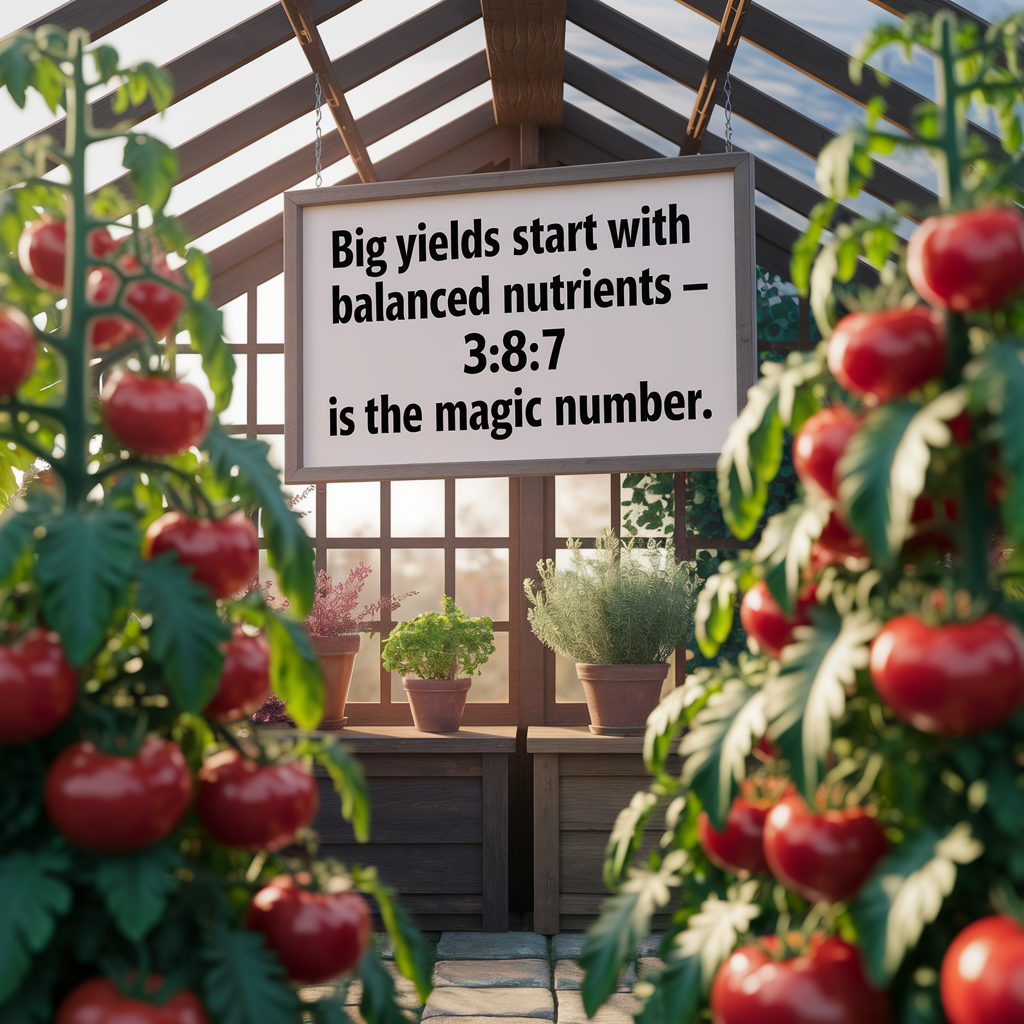
2. Check for Calcium and Iron
Some fertilizers quietly leave out calcium, and that’s a problem. Without it, your plants can develop blossom end rot—those nasty black spots on the bottom of your tomatoes. Iron is also crucial for healthy green leaves. If a product doesn’t list these on the back, I skip it.
3. Bonus Ingredients Like Humic Acid
This used to sound like marketing fluff to me. But after switching to a formula with humic acid, I noticed my plants bounced back faster from stress and absorbed nutrients better. It’s one of those things you don’t realize you need until you try it.
4. Instructions That Match Your Setup
Some fertilizers are made for ground beds, some for containers, and others for hydroponics. I’ve accidentally used slow-release pellets in a container garden where I really needed liquid feed—it didn’t go well. Always make sure the product fits how you’re growing.
Once you know what to look for, you’ll never fall for the generic “all-purpose” stuff again. And honestly, that’s when tomato growing gets a lot more fun—when your plants actually thrive.

Liquid vs Granular Fertilizer for Tomato Plants
Let me settle this right now: both can work. But depending on your setup, one may be way better than the other. I’ve used both liquid and granular fertilizers on my tomato plants, and here’s what I’ve learned from real experience.
Liquid Fertilizer: Fast, Easy, and Powerful
Liquid fertilizer is my go-to these days, especially when growing in containers. It works fast, it’s easy to mix with water, and you can feed your plants exactly when they need it. That’s why I keep coming back to this super-concentrated tomato fertilizer—I can control the dose and apply it directly at the roots without guessing.
It’s also great for:
- Rescue situations (yellowing leaves, nutrient deficiencies)
- Weekly feeding routines
- Container plants that dry out faster and need more frequent care
Granular Fertilizer: Set It and Forget It (Kinda)
Granular fertilizer is slower to break down, but it can be helpful when you plant in garden beds and want something more long-term. I used it when I had a larger in-ground setup. The downside? It’s easy to overdo it, and once it’s in the soil, you can’t take it back.
Which One Should You Use?
If you’re new to tomato growing or working with pots or raised beds, go liquid. It’s flexible, fast, and harder to mess up. If you’ve got space, time, and a good understanding of your soil, granular can be part of your long-game.
Either way, don’t just throw fertilizer down and hope for the best. Use the right one for your setup, and you’ll get healthier plants and way better tomatoes. Next, I’ll break down when to fertilize tomatoes and the schedule that finally worked for me.

When to Fertilize Tomatoes for Maximum Growth
Knowing what to use is only half the battle—when you fertilize makes a huge difference too. I used to be the guy who either forgot to feed his plants or dumped on too much at once. Neither one worked out great.
Over the years, I’ve settled into a schedule that’s simple and actually gets results. If you’re trying to figure out how often to fertilize tomatoes or when to start, here’s what’s worked best for me.
1. At Planting Time
Whether I’m transplanting seedlings or putting store-bought starts in the ground, I always mix a small amount of fertilizer directly into the planting hole. A balanced fertilizer like the 3:8:7 one I use now gives the plant a solid head start—especially with phosphorus for strong roots.
2. About 2 Weeks After Transplanting
This is when I start regular feedings. The plant has settled in, started growing, and now it’s hungry. I use a diluted liquid fertilizer every 7–10 days, especially for my container tomatoes that need more frequent feeding.
3. When Flowering Starts
This is a big moment. Once you see those little yellow flowers, your plant is shifting into fruit production mode—and it needs support. I usually bump up my feeding slightly, sticking with the same fertilizer but applying it consistently.
4. While Fruits Are Developing
During this stage, I keep feeding about once a week with my liquid fertilizer. I’ve noticed that skipping feeding here often results in smaller tomatoes or plants that just kind of stall out. Regular, balanced feedings keep everything moving forward.
5. After Harvest (Optional)
If your tomato plant is indeterminate (meaning it keeps growing all season), keep feeding until it slows down naturally or frost ends the party. Determinate types will taper off on their own, so you can ease up near the end of their cycle.
Bottom line? Consistency is key. Most of my fertilizer success came when I stopped guessing and started sticking to a rhythm. And trust me, your tomato plants will let you know when they’re happy—you’ll see the difference in color, size, and how many fruits they crank out.
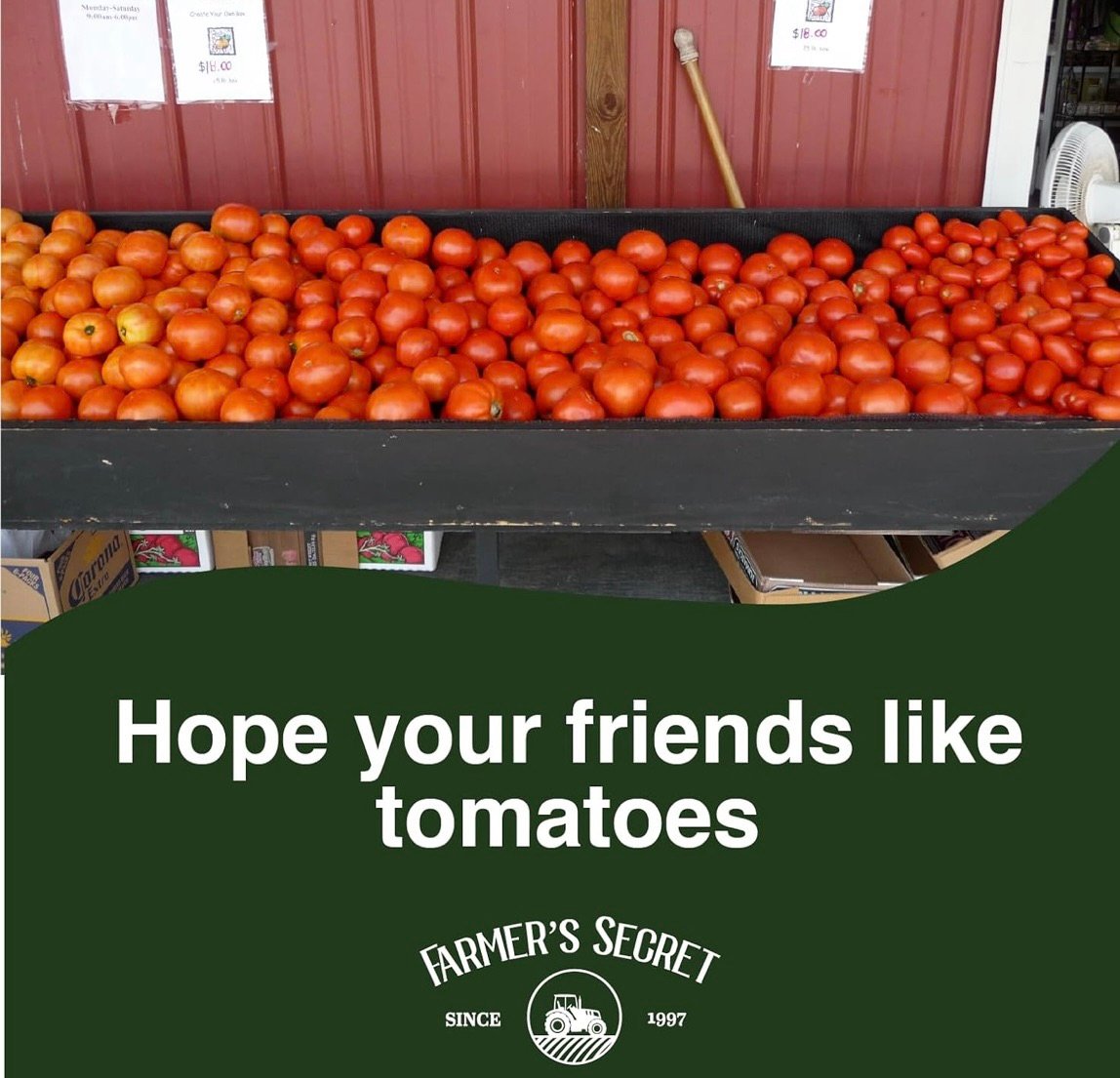
Best Tomato Fertilizer I’ve Personally Used and Recommend
After trying everything from basic garden center brands to random “tomato boosters” I found online, I finally landed on a product that genuinely worked for me—and I’ve stuck with it ever since.
The fertilizer I now use is a super-concentrated liquid formula with a 3:8:7 NPK ratio, plus added calcium, iron, and humic acid. Sounds fancy, I know—but here’s what it actually did:
- Stopped yellow leaves in their tracks
- Promoted strong flowering and fruit production
- Made my plants visibly greener and sturdier within a week
- Worked in both containers and garden beds
- Didn’t burn my plants, even when I used it regularly
I started seeing better results almost immediately, especially during the mid-season when my tomatoes usually slow down. This stuff gave them a second wind.
The humic acid in it? Total game changer. It helps the plant actually absorb the nutrients instead of just letting them sit in the soil. And because it’s concentrated, one bottle lasts way longer than I expected.
I don’t push products lightly, but this one actually made a visible difference. If you’re still on the hunt for the best fertilizer for tomatoes, I’d say start here—because this is what finally worked for me.
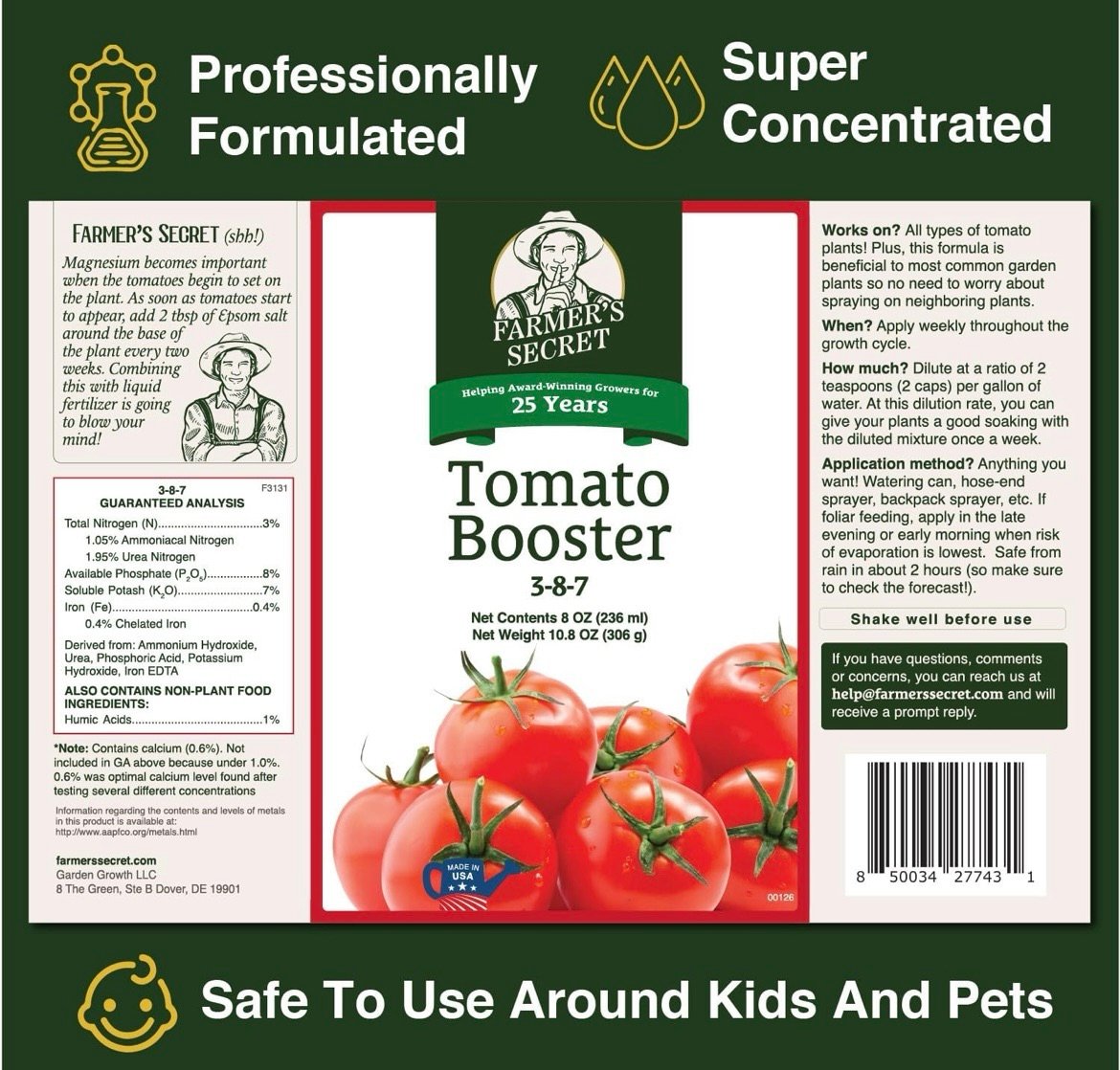
Organic Tomato Fertilizer Options If You Want to Go Natural
I’ve got a soft spot for organic gardening. There’s just something satisfying about feeding your tomato plants with ingredients you can actually pronounce. While I mostly use my go-to concentrated fertilizer now because of the results, I’ve also tested a few organic tomato fertilizers over the years that genuinely worked.
If you’re looking for the best fertilizer for tomatoes that leans more natural, these are some solid options I’ve personally tried or would recommend based on real-world results.
1. Espoma Tomato-Tone
This one’s a classic. It’s an organic granular fertilizer with a balanced NPK ratio plus added calcium to help prevent blossom end rot. It doesn’t smell amazing (you’ve been warned), but it works well for in-ground and raised bed gardens. I used it during one full growing season and had steady, healthy growth the whole way through.
2. Dr. Earth Home Grown Tomato, Vegetable & Herb Fertilizer
This one’s got a cult following in the organic gardening world. It’s packed with beneficial microbes and organic nutrients and gives plants a slow-release boost. I found it great for long-term feeding, especially in beds where I didn’t want to fuss every week.
3. Compost + Worm Castings
You can never go wrong with rich compost or worm castings added to your soil before planting. While they’re not a complete fertilizer on their own, they help build healthy soil, improve structure, and provide a gentle nutrient boost that keeps tomato roots happy.
The main downside to going fully organic? Sometimes it works slower. If you’re dealing with a stressed-out plant or yellowing leaves, organic fertilizers may take longer to show results—whereas something like the liquid formula I use now kicks in fast.
That said, if you’re all about feeding your tomatoes naturally, organic options absolutely get the job done—it just takes a little more patience and consistency.
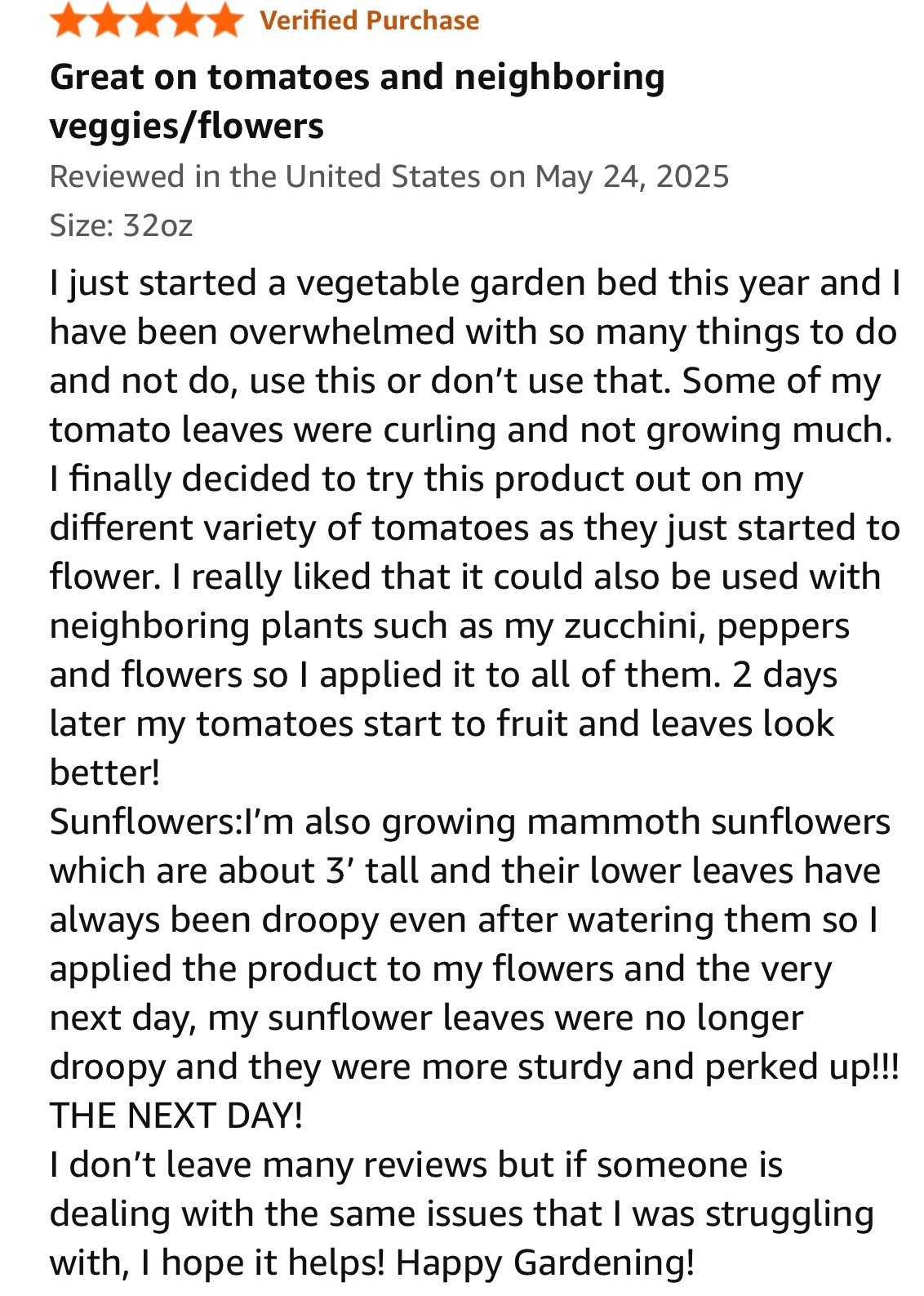
Fertilizing Tomatoes in Containers vs In the Ground
If you’re like me and grow tomatoes in a mix of containers and garden beds, you’ve probably noticed that one size does not fit all when it comes to fertilizer.
Early on, I treated my container tomatoes and in-ground plants the same. Big mistake. The truth is, container-grown tomatoes need more frequent feeding because nutrients drain away faster every time you water. Once I adjusted my schedule, my container plants stopped looking like sad, underfed cousins of the ones in the beds.
For Containers:
- Use a liquid fertilizer regularly (once a week or every 10 days)
- Water thoroughly before and after feeding
- Use a product that won’t burn roots (the liquid I recommend works great here)
For In-Ground or Raised Beds:
- Feed less often — usually every 2–3 weeks
- Granular or slow-release fertilizers can work better for long-term feeding
- Add compost at planting time to build a strong foundation
The first time I switched to a liquid tomato fertilizer in containers and stuck to a consistent schedule, the results were ridiculous. Faster growth, earlier blooms, and more tomatoes per plant. Meanwhile, my garden bed tomatoes held steady with fewer interventions.
If you’ve been wondering why your potted tomato plants seem to struggle more, this is probably it. When it comes to the best fertilizer for tomatoes, it’s not just about what you use—it’s also about how and where you use it.

What Happens When You Use the Wrong Fertilizer
Oh man, I’ve done this. I’ve grabbed the wrong bag, fed my tomatoes what I thought was a decent mix, and watched them go from promising to pitiful real quick.
Using the wrong fertilizer for tomatoes can throw everything out of whack. Whether it’s too much nitrogen, not enough calcium, or something with zero potassium, you’ll start seeing weird symptoms—like tons of leafy growth but no fruit, yellowing leaves, stunted growth, or even blossom end rot.
Here’s what I’ve personally seen go wrong when the fertilizer just wasn’t right:
- All Leaves, No Tomatoes
One year I used a high-nitrogen fertilizer left over from lawn care (rookie mistake). The plants looked gorgeous—tall, lush, deep green—but I barely got a handful of tomatoes. Turns out, nitrogen is great for leaves, but you also need phosphorus and potassium to set fruit. - Yellow or Curling Leaves
If your tomatoes start yellowing or the leaves begin curling inward, your fertilizer might be lacking in key nutrients—or worse, you’re overdoing it and causing nutrient burn. I’ve written more about those issues right here if you want to dig deeper. - Blossom End Rot Nightmare
Lack of calcium in your fertilizer or poor calcium absorption can lead to those sad, black-bottomed tomatoes. I always make sure the tomato fertilizer I use includes calcium and micronutrients, which is one reason I switched to the liquid formula I now swear by.
Lesson learned: tomatoes are picky eaters. If your fertilizer isn’t dialed in, it can totally derail your growing season. The best fertilizer for tomatoes isn’t just about brand—it’s about having the right balance of nutrients they actually need.
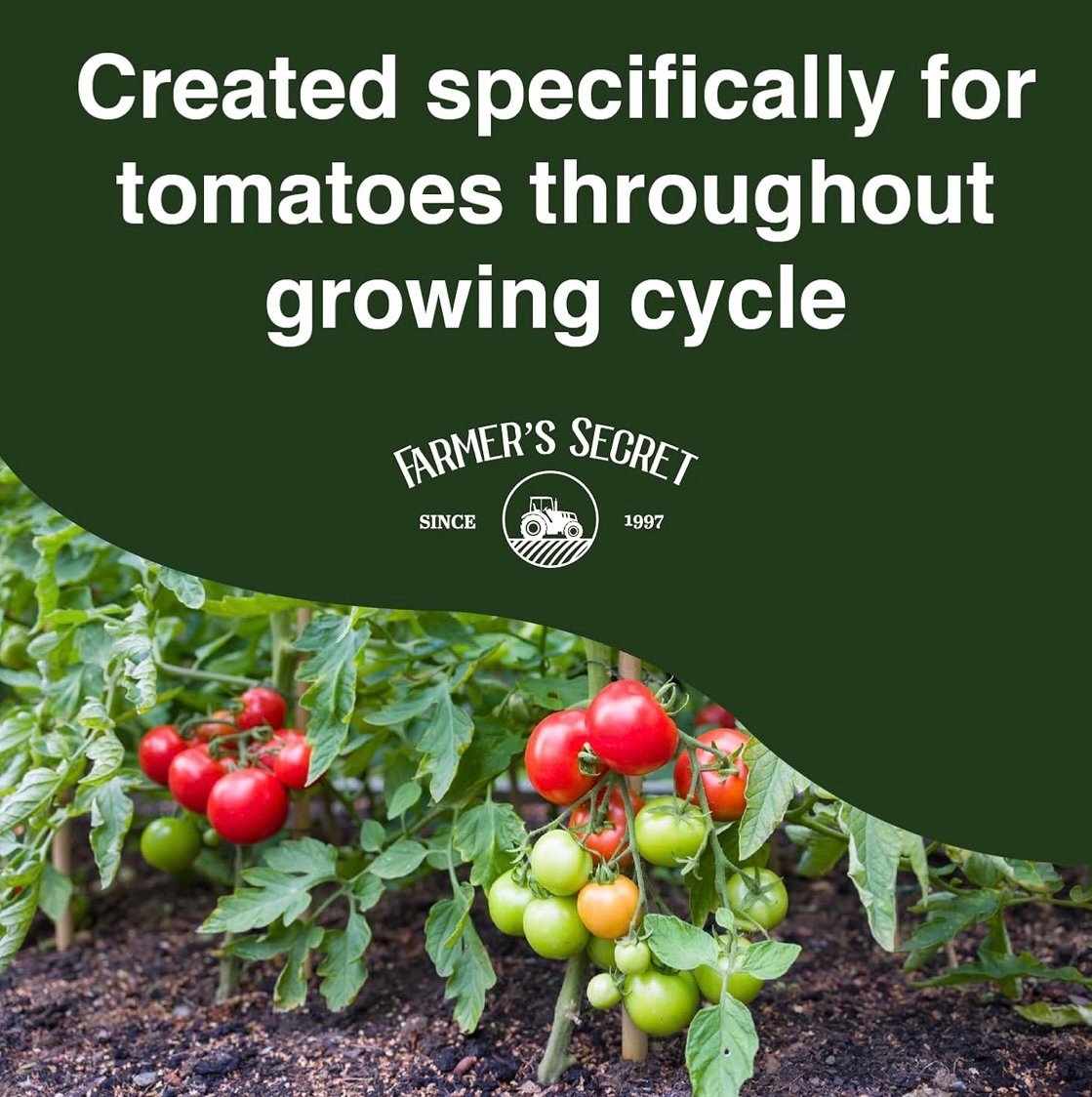
The Best Fertilizer for Tomatoes Is the One You’ll Actually Use Consistently
Let’s be real—consistency is everything when it comes to fertilizing tomatoes. You can have the absolute best fertilizer in the world, but if you forget to use it or don’t stick to a schedule, it won’t help much.
That’s why I ended up going with a liquid tomato fertilizer that’s quick, easy, and forgiving. It doesn’t burn the plants, it absorbs fast, and I can mix it right into my watering routine without much thought. This one here is the best tomato fertilizer I’ve personally used—it saved my plants from underperforming and even helped revive a few sickly ones.
Whether you prefer organic options, slow-release granules, or a liquid booster like I do, the key is to find a method that fits your schedule and growing setup. Once I started treating fertilizing like brushing my teeth—just part of the routine—my tomato harvests completely changed.
So yeah, in my experience, the best fertilizer for tomatoes is the one you’ll actually use—and use right. Because when you do, those juicy, red, garden-fresh tomatoes aren’t just possible… they’re practically guaranteed. 🍅💪

As an Amazon Associate we earn from qualifying purchases through some links in our articles.

